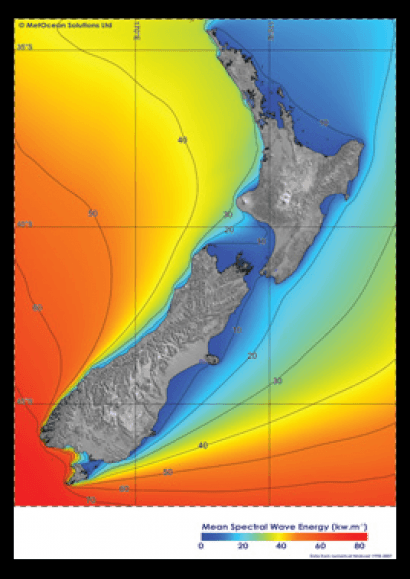
“New Zealand has huge potential to generate electricity from marine energy in the future,” says Ms Parata. “This could add significantly to our renewables portfolio.” It is estimated that as much as 8,000 megawatts of marine energy resources are available – nearly as much as New Zealand’s current installed generation of around 9,600 MW. “The Marine Energy Deployment Fund is one way of gaining practical knowledge about the generation of electricity by wave and tidal devices in New Zealand waters. This will help us better understand how and when this technology will contribute to our electricity supply and will ultimately accelerate its commercialisation,” Parata continues. “The Government’s commitment to developing renewable energy resources was underlined in the recently-released New Zealand Energy Strategy, which includes a target of generating 90 percent of electricity from renewable resources by 2025.” According to the latest figures, New Zealand is well on its way to achieving this goal, with 79 percent of its electricity generated from renewable resources in the last two quarters.
The successful marine energy projects named today are:
• Community Leisure Management Ltd (CLM): Parnell Baths Marine Energy. NZ$203,000 for the installation and deployment of up to three turbines on the Tamaki Drive Road Bridge to harness the tidal flows in and out of Hobson Bay. The electricity generated by the turbines will be used to pump and re-circulate treated seawater in the nearby Parnell Baths.
• Wave Energy Technology New Zealand Ltd (WET-NZ) (a joint venture of Power Projects Ltd and Industrial Research Ltd): NZ$361,884 for the installation of a cable at WET-NZ’s Moa Point Test Site on Wellington’s south coast. The cable will later be available for use by other marine energy developers for further device testing.
• Tangaroa Energy Rakia Amps Ltd: Tangaroa Energy/Langlee Wave Power Project: NZ$312,000 for the manufacture of a 20kW wave energy device which will be installed and deployed in the eastern waters of Stewart Island.
Funding is administered by the Energy Efficiency and Conservation Authority (EECA) and is subject to the developers meeting certain milestones, including obtaining all necessary resource consents and sufficient finance. The projects are expected to be built within the next two years.
WET-NZ and Chatham Islands Marine Energy (CHIME) already have projects underway, boosted by previous funding rounds of the Marine Energy Deployment Fund. In Round 2, NZ$760,000 was awarded to WET-NZ to test a half scale wave device near Akaroa, while CHIME received $2.16 million in Round 3 to install an oscillating water column to power two 110 kilowatt Wells turbines, subject to conditions, including receiving resource consent.
Elsewhere, the Minister announced that funding for the first phase of Crest Energy’s Kaipara Harbour installations awarded in Round 1 of the Marine Energy Deployment Fund has been withdrawn because “Crest Energy is unable to meet the time lines associated with the funding”. NZ$1.85 million from the fund was set aside in 2008, for a 3 MW pilot tidal stream generator project in the Kaipara Habour, which was a precursor to their larger 200 MW project. Despite the setback, Minister Parata said that EECA will continue to work with Crest Energy to learn from the project as it proceeds.
For additional information:

